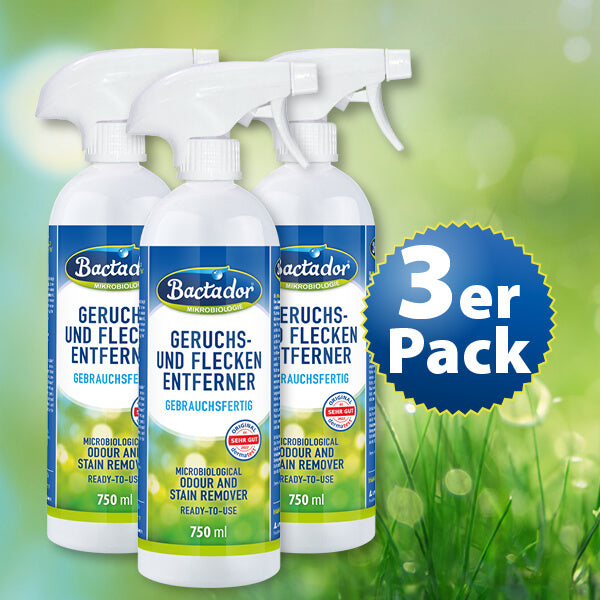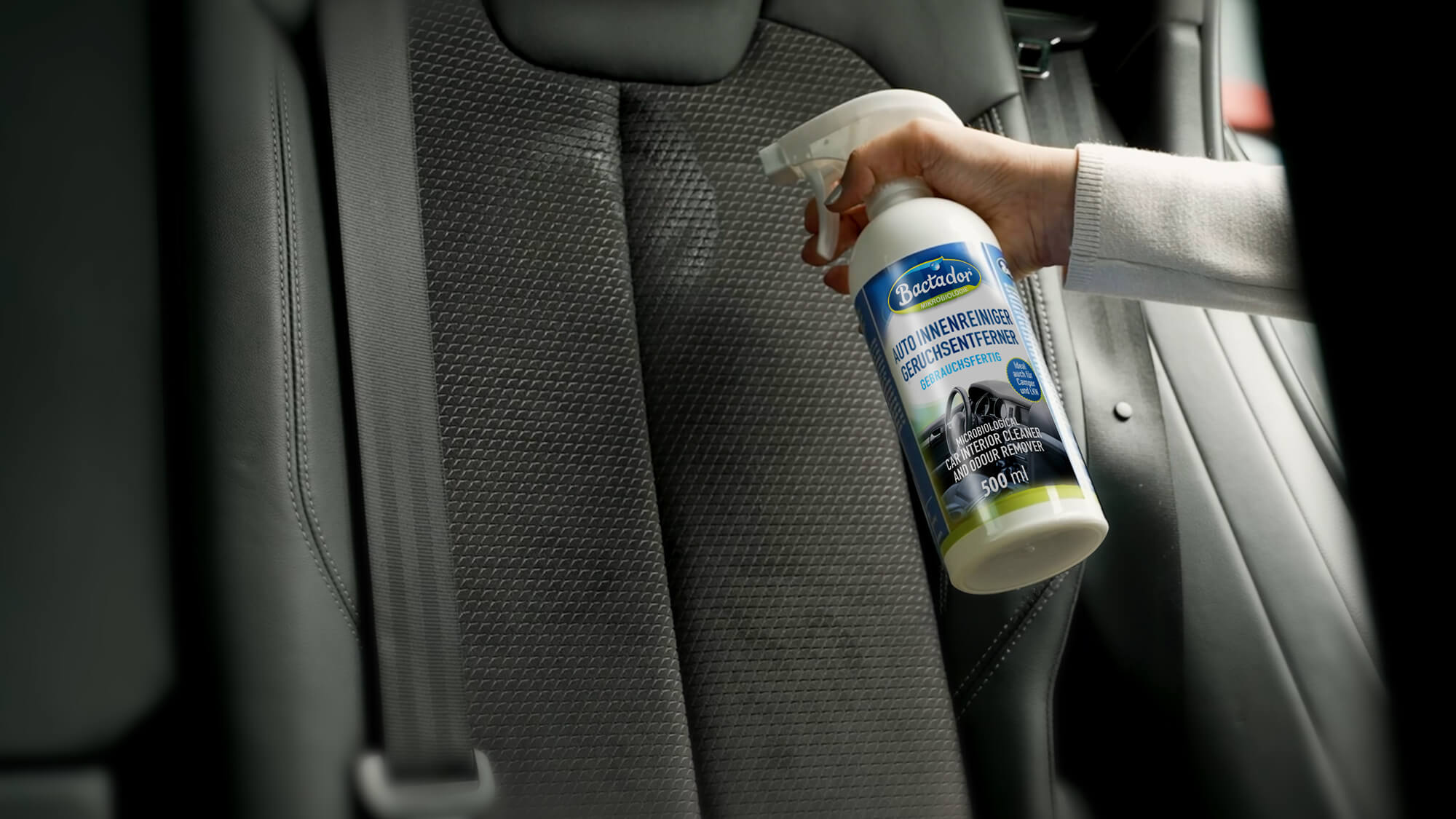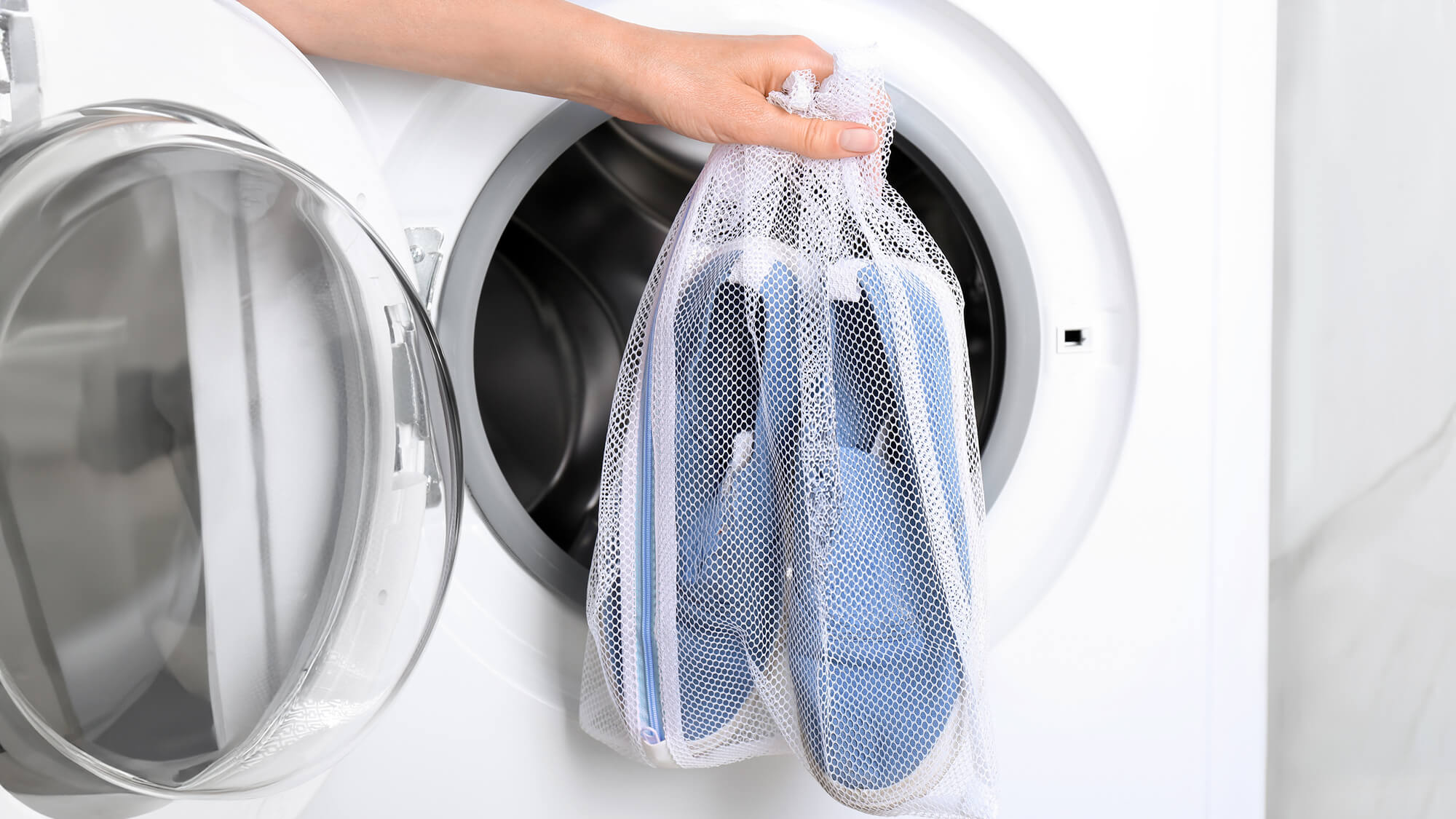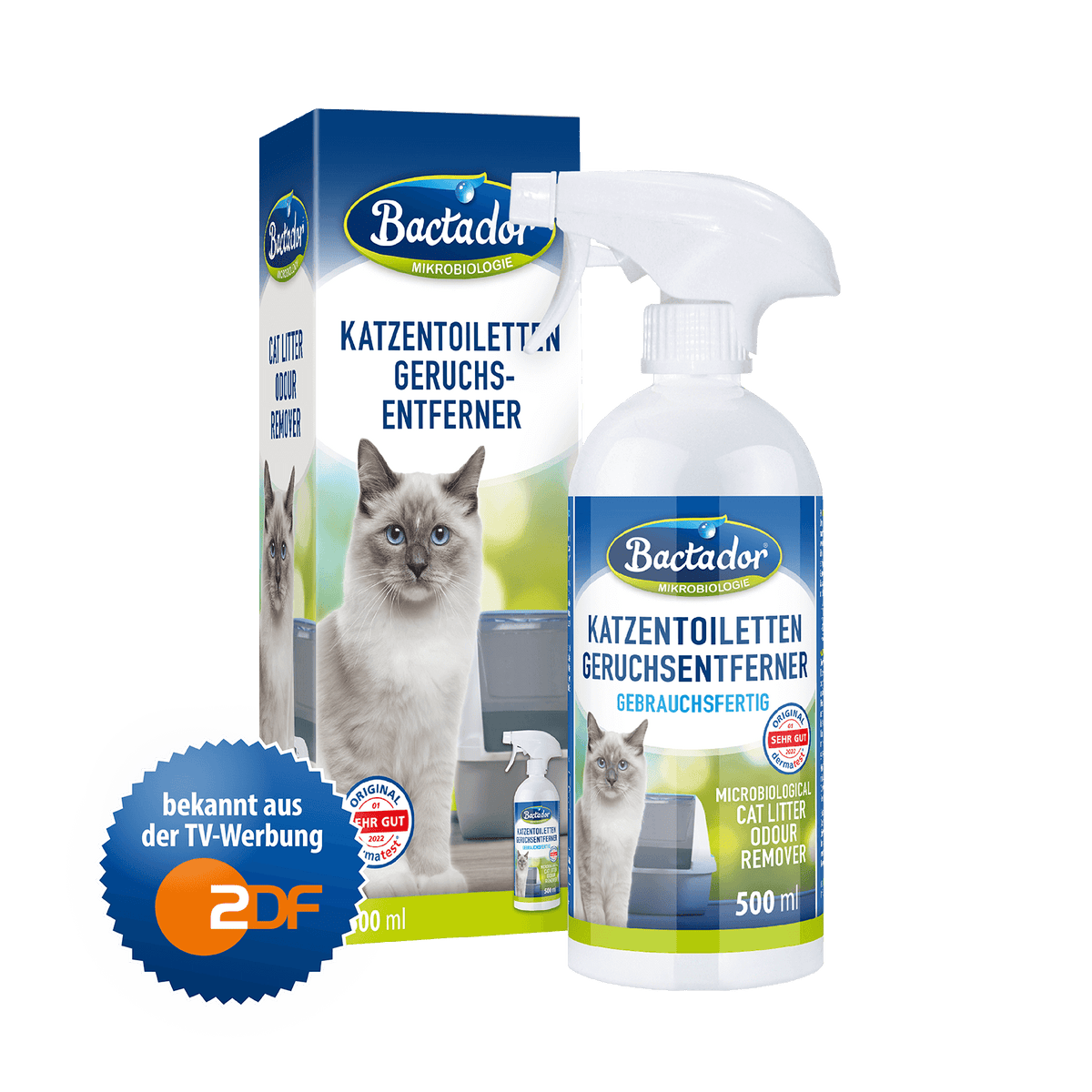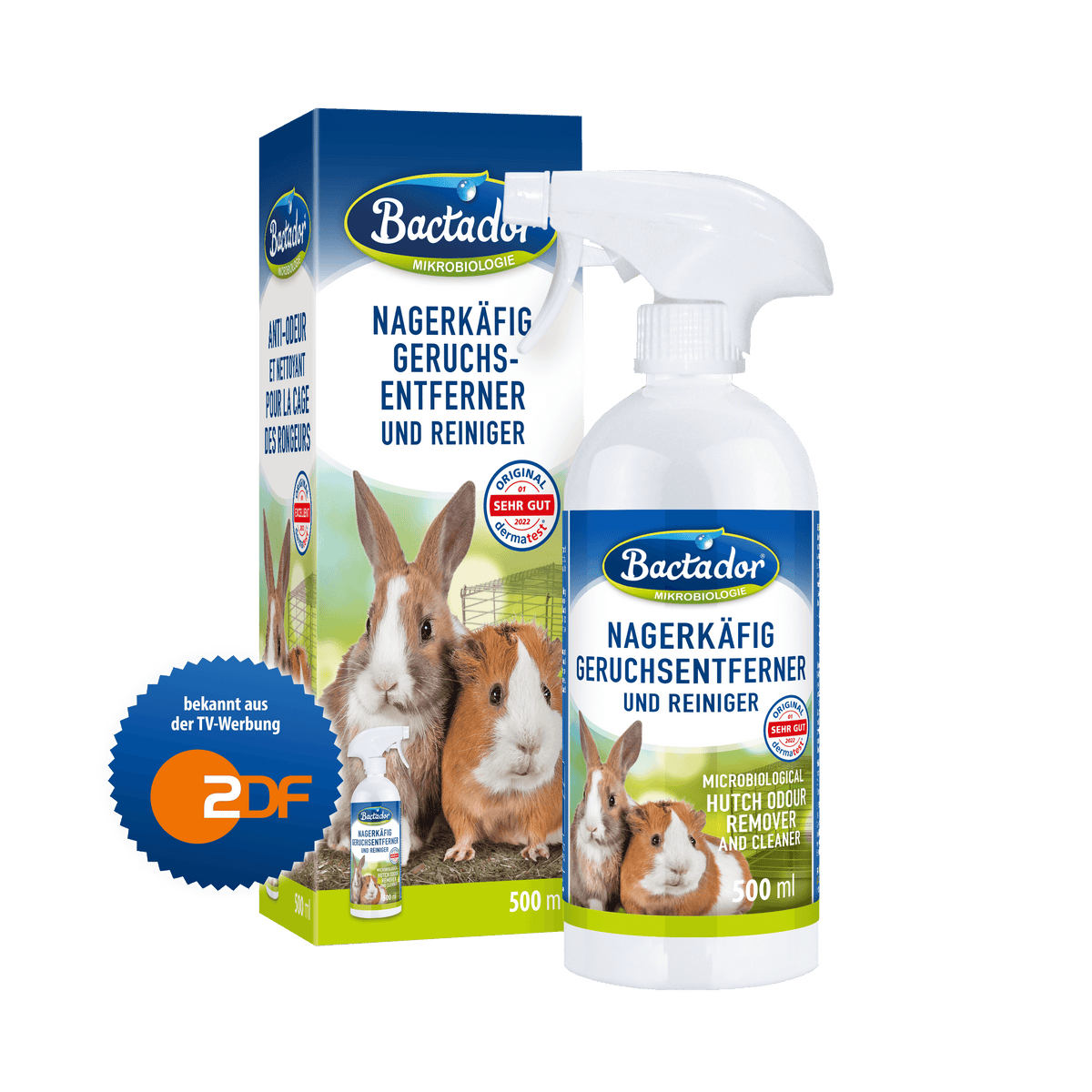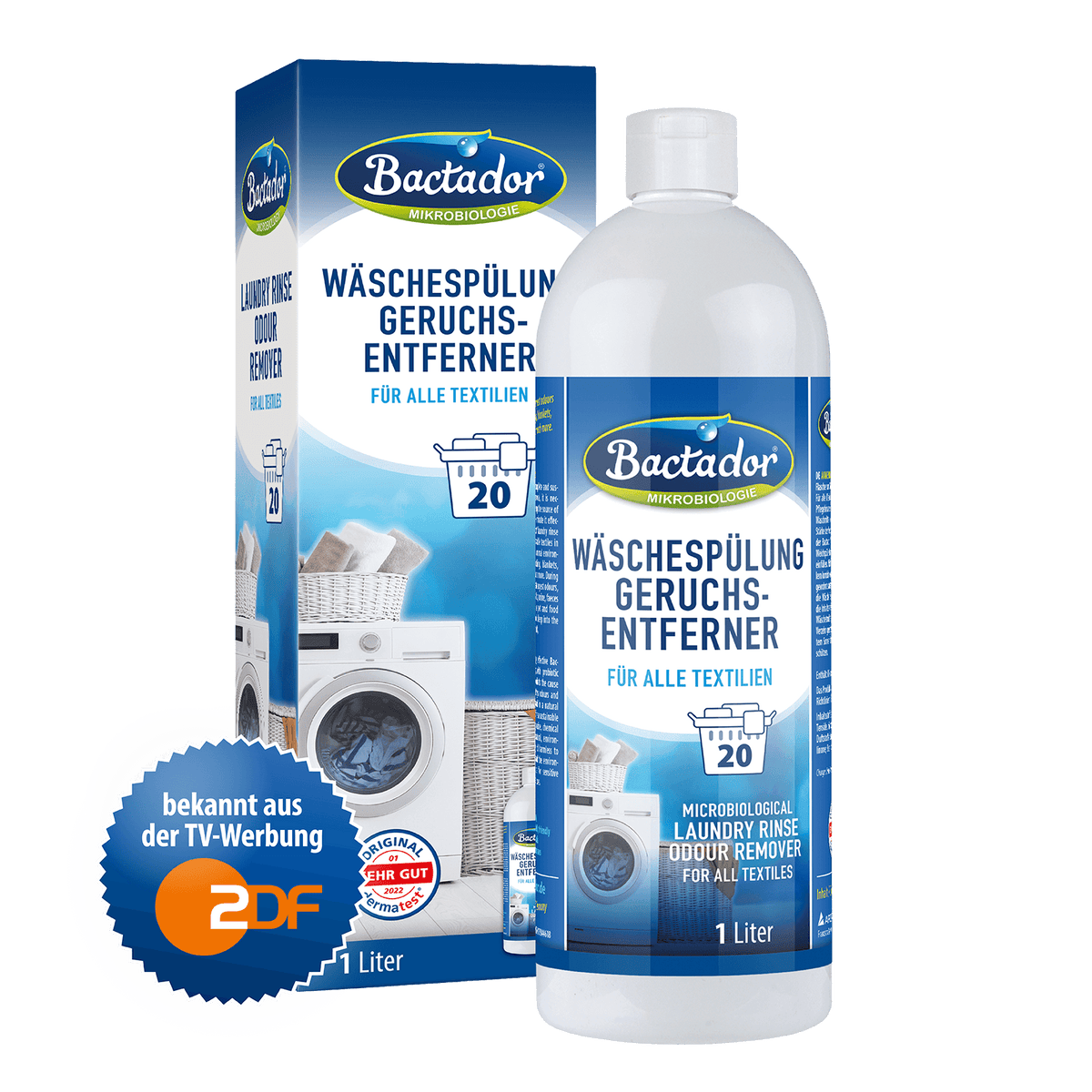Find faster,
what you are looking for:
- How often should I clean the litter box?
- Step-by-step instructions
- What do I need to clean the litter box?
- Why is it important to clean the litter box regularly?
- Tips and tricks for the litter box
How often should I clean the litter box?
You should remove clumps from the litter box every day . Depending on the type of cat litter, these clumps may be urine and feces that have solidified in the litter. To avoid strong odors and ensure a pleasant freshness, spray the litter with Bactador Cat Litter Box Odor Remover afterward.
You should do a complete cleaning, where you change all the cat litter and wash out the entire litter box , at least once a week .
However, this is only a rule of thumb. Age, health, drinking and eating habits, and whether your cat is an indoor or outdoor cat all influence how often they use the litter box. This, in turn, determines how often the clumps need to be removed. The number of cats in your household also influences how often you should clean the litter box.
In your cat's best interest as well as yours, you should always ensure that the litter box is clean. Concentrated urine and feces emit a pungent odor. This can not only disrupt the pleasant atmosphere in your home, but also cause your cat to prefer to relieve itself elsewhere in the house. Bactador Cat Litter Box Odor Remover is your reliable problem solver.

Cleaning the litter box - A step-by-step guide
Daily
Step 1: Dispose of the lumps
Use a scoop or strainer to remove the dirty, clumpy bits from the litter box. Place the clumps in the trash bag or trash liner.
Step 2: Add fresh litter
Add an appropriate amount of fresh cat litter to refill the litter box to its usual level . Make sure to distribute the litter evenly.
Step 3: Spray Bactador Cat Litter Odor Remover onto the litter
Spray the entire surface of the cat litter with Bactador Cat Litter Box Odor Remover and let it dry. This will help remove the unpleasant odor, which tends to settle deep within the litter.
It also helps to keep the litter fresher for longer, because the Bactador microorganisms continue to work on neutralizing new odors until the source of the odor is neutralized deep down and thus permanently removed.
Step 4: Dispose of the trash
Securely seal the trash bag and dispose of it in your trash can or in an outdoor trash can. If your trash can still smells unpleasant, you can also freshen up the air there with the Bactador Cat Litter Box Odor Remover .
If litter has landed outside the litter box, you can remove it with a vacuum cleaner or broom. You can then spray the area around the litter box with Bactador Spray .
Weekly
Step 1: Empty the litter box
Empty all the litter from the litter box into a trash bag or trash can. Alternatively, you can scoop out the litter from the box with a scoop.
Step 2: Remove coarse dirt
Use a brush or sponge and warm water to remove any dirt or residue. Make sure the brush or sponge is soft enough so you don't damage the litter box material.
Step 3: Spray Bactador generously into the litter box and the surrounding area
For deep cleaning and permanent odor elimination, our Bactador Cat Litter Box Odor Remover is ideal. Spray Bactador liberally into the litter box and surrounding area and let it dry for at least 10 minutes. Then, wipe away any excess with a dry cloth.
That's why you should also clean the area around the litter box regularly .
Step 4: Replace the litter
Pour fresh cat litter into the clean and dry litter box. Make sure to use the recommended amount according to the manufacturer's instructions and distribute the litter evenly.
Step 5: Dispose of the trash
Close the garbage bag or bin securely and dispose of it properly in your trash can or outdoor garbage bin.
You can then use a vacuum or broom to remove any litter that has landed outside the litter box. You can spray any remaining musty spots in the trash can or around the litter box with Bactador .

What do I need to clean the litter box?
- Litter box scoop or sieve
- garbage bags
- cat litter
- Bactador Cat Litter Box Odor Remover
- Brush or sponge
- Vacuum cleaner or broom
- if necessary, newspaper
- if necessary, disposable gloves
Which cleaning products can I use and which can't I use?
Because of their sensitive sense of smell, cats are much more sensitive to artificial scents than humans. Therefore, you should avoid strong-smelling cleaning products and household remedies, such as vinegar . Furthermore, many common cleaning products react unpleasantly with cat urine, forming smelly ammonia.
Enzyme cleaners are often recommended. However, conventional enzyme cleaners contain artificial, synthetic enzymes designed for specific cleaning tasks. These products cannot permanently remove odors .
A safe choice is our Bactador cat litter box odor remover, which contains probiotic microorganisms that produce enzymes. Unlike conventional enzyme cleaners and household remedies, it doesn't just mask odors, but actually removes them permanently and deep down into the pores. With its microbiological ingredients, Bactador is not only suitable for cats and humans, but also particularly gentle on the material.

Why is it important to clean the litter box regularly?
Regularly cleaning the litter box is very important for several reasons:
- Avoiding odors : Unclean cat litter can lead to unpleasant odors. Regular cleaning with Bactador Cat Litter Box Odor Remover
- Prevent behavioral problems : Unclean litter boxes can lead to behavioral problems such as soiling outside the box. Your cat may use other places in the house as a substitute if the litter box isn't clean. If your cat has urinated outside the litter box, you can permanently eliminate the odor with Bactador Cat Litter Box Odor Remover .
- Disease prevention : A dirty litter box can lead to health problems in cats, such as urinary tract infections. Regular cleaning helps minimize the risk of bacterial infections or parasitic infestations.
- Monitoring for health problems : Regularly cleaning the litter box also makes it easier to notice changes in your cat's stool or urine. This allows for early detection of health problems that may require veterinary treatment.
Why is it important to regularly clean the area around the litter box?
Over time, urine particles also find their way past the litter box, forming so-called "urine deposits" on floors and tiles. These deposits settle not only under the tiles but also behind the walls.
Although conventional chemical cleaners may make the surface appear clean, they don't remove the urine deposits. This means the unpleasant odor recurs and persists.
Product tip: Our Bactador cat litter box odor remover penetrates deep into the crevices and cracks. The microorganisms it contains remove the odor source deep down, even in open-pored surfaces. For a lasting effect, the microorganisms remain on the surface. As long as you don't rinse the areas with water or use other cleaners afterward.
Discover more tips on how to remove the smell of cat urine in your home .
Tips and tricks for the litter box
What can I do if the house smells bad despite cleaning the litter box?
Even if you clean your litter box regularly, it can still develop an unpleasant odor in the area. Even the smallest amount of urine in the cracks and crevices around the litter box can cause this unpleasant odor.
If there's a strong, unpleasant odor around the litter box, our Bactador Cat Litter Box Odor Remover can help. Simply spray it into the area, especially in open crevices, and let it work for at least 5 minutes. Then, wipe away any residue with a dry cloth.
You can also find tips on what you can do about fresh or dried urine stains in the house in our blog “Removing cat urine smell – tips for a clean environment” .
How do I avoid cat litter all over my house?
Cat litter easily spreads throughout the house. It can easily get caught in your cat's fur or paws. To prevent this, you can place a large mat or towel in front of the litter box.
When cleaning the litter box, litter or dirt can easily end up next to the trash bag. You can therefore simply use newspaper as a base . After cleaning, the paper can be disposed of like the rest of the litter.
Which and how much cat litter?
The choice of cat litter depends on your cat and your preferences . There are many types, such as clumping litter, silicate litter, and eco-friendly litter. Clumping litter is popular because it's especially soft under your cat's paws and easy to clean. Try different types of cat litter to find out which one your cat likes best.
You need about 5-7 cm of litter in the litter box . Since cats get used to the litter level, you should always make sure to maintain the usual level. If the level is too low, your cat might want to defecate outside the litter box, as it won't be able to bury its feces. If the level is too high, you'll notice cat litter outside the litter box.
What to do if the cat doesn't use the litter box?
Remember that sudden changes in your cat's behavior can sometimes indicate health problems, so it's important to have a veterinary examination first.
In addition to health issues, there are other possible reasons why your cat isn't using the litter box. Here are some steps you can take to solve the problem:
- Make sure the litter box is clean. Here are step-by-step instructions on how to clean the litter box .
- Place the litter box in a quiet and easily accessible location. Cats prefer privacy, so avoid busy areas.
- Reduce stressors in your cat's environment. Changes in the household, new pets, or loud noises can cause stress.
- If you have more than one cat, you should also have multiple litter boxes. Some cats don't like sharing.
- Some cats prefer enclosed litter boxes for more privacy, while others prefer open ones. If possible, try different types.
Not a tip, but important! Toxoplasmosis during pregnancy.
Have you heard of toxoplasmosis? Toxoplasmosis is an infectious disease caused by the parasite Toxoplasma gondii. This can infect a variety of animals and even humans. While all animals can transmit toxoplasma through their meat, cats are the only ones in which the parasite can complete its life cycle . Cats excrete infectious stages, called oocysts, in their feces. (Source: ESCCAP )

During pregnancy , the woman's immune status is crucial . If she is protected from a previous Toxoplasma infection, the unborn child is also protected. Without immune protection from the mother, a toxoplasmosis infection in the unborn child has various, sometimes serious, consequences.
As a rule, the consequences for the unborn child are more severe the earlier the infection occurs in development. Therefore, it is advisable to take special precautions to minimize the risk of infection during pregnancy. These include avoiding raw meat and practicing hygiene when gardening .
Basically, it's not the general handling of the cat that's important when you're pregnant, but rather the contact with cat feces . One measure is to have someone else empty and clean the litter box daily, if possible. The cat litter should be disposed of in an airtight container.
For more information about toxoplasmosis, see the European Scientific Counsel Companion Animal Parasites (ESCCAP).

